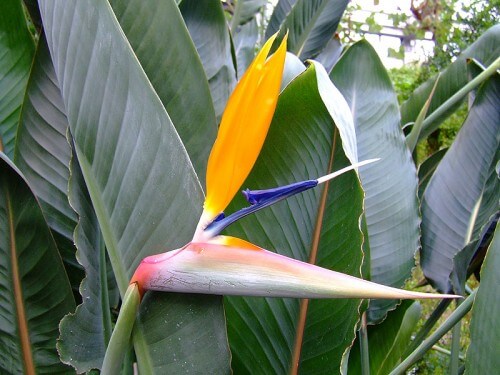The pollination mechanism of the bird of paradise plant, which is based on a unique bending mechanism and lacks hinges, serves as a source of inspiration and a source of knowledge for building technological systems that save energy and maintenance costs.

Architectural structures such as shading systems, umbrellas or awnings, usually contain rigid components, connected by hinges. These components are exposed to loads during use, they wear out and need maintenance and replacement. In nature there are flexible structures that present a different way to deal with the challenge of bending. Although the term axis appears in the literature to describe their flexible connectors, plants bend without axes, but by means of axis-like structures, characterized by a local reduction in material thickness.
Bird of paradise is a beautiful bird-like ornamental flower, whose pollen is transferred from flower to flower by birds. The birds land on the flower petal, and their weight causes the petals to temporarily bend. The bending exposes the stamens, and these stick to the bird's feet, which then continues flying to other flowers and performs the work of pollination. With the flight of the bird and the release of the load from the petals, the stamens retreat back to the position of the source, and are safely covered by the petals thanks to the elastic characteristics of the system. To view the pollination mechanism click this link.
From an engineering point of view, the bending mechanism of the flower is a hingeless movement mechanism. An external mechanical force (the weight of the bird) creates a bending of several components. Due to the elastic properties of the components, the stored elastic energy can return the system to its initial state.
The interesting movement mechanism was researched by Mr. Simon Schleicher with the assistance of the University of Stuttgart, and registered as a patent under the name Flectofin. In a biomimetic development process, which arose from an engineering challenge of developing a hingeless bending mechanism, bending mechanisms were tested in a number of plants, including the bird of paradise. In the first step, a physical model was built that demonstrates a bending behavior similar to that demonstrated in the bird of paradise plant. Through this model, the understanding of the mechanism was deepened and the geometrical and material parameters needed to develop applications of this mechanism were defined. The weight of the bird is replaced by a light press with the finger, following which the central "spinal" begins to curve and the parts connected to it bend to the sides. To view the physical model click on this link.
This bending mechanism, which lacks hinges, may have many applications, from the micro level to architectural applications for buildings. The application of the bending mechanism to architectural applications became possible after a suitable polymer was identified, with elastic capabilities, capable of reaching a large deflection before failure. A louvered shading system is currently under development, allowing opening angles ranging from -90 to +90. The bending process can be triggered by external pressure exerted by the user, or autonomously, as a response to a temperature change. Since the system works without straight axes, it can be adapted to the shading of facades with a curved structure.
The use of mechanical systems without hinges lowers the level of maintenance required, and brings energy savings in operation. The lack of hinges also allows production in one step and the elimination of the need for assembly.
It is interesting to see that precisely plants that lack movement abilities demonstrate fascinating movement mechanisms. Once again we are witnessing that under constraints innovative solutions are manifested in nature. Like the bird of paradise, there are other plants worthy of research, which carry innovative movement mechanisms that can be a source of inspiration and knowledge for applications in several fields, including architecture, aviation, medical technology and engineering.
For more information
For information on the Innovation from Nature website

3 תגובות
Alon, it's just a matter of accessibility and thanks again to the people of the Biomimicry Association website who approved me to use the materials. If biomedical engineering students share their ideas with us it could also be an interesting addition. Nothing replaces anything, there is enough space for news that has long-term and short-term implications.
As you can see from dealing with environmental issues on the science website, we are concerned with other aspects for the very distant future.
Alon - in the site's search engine: so what do they do there at the university
Lately there have been many articles on the site from the 'biomimicry' organization as an enthusiast that new and bold ideas are very refreshing and intriguing!
, but, at the same time when you want to get to the bottom of the story to understand if anything useful came out of those ideas, I come to the understanding that a considerable part of the ideas are only in the model and ambition stages, without any strong grip on the ground in the form of developing a device that can be widely used in the near future, thus Not much different from my project and thousands of others like me who have to do at the end of their degree (in my case biomedical engineering)
So I'm not so sure that I understood why it deserves to appear in the news of the site compared to other bold and intriguing ideas that are buzzing in the university corridors..?